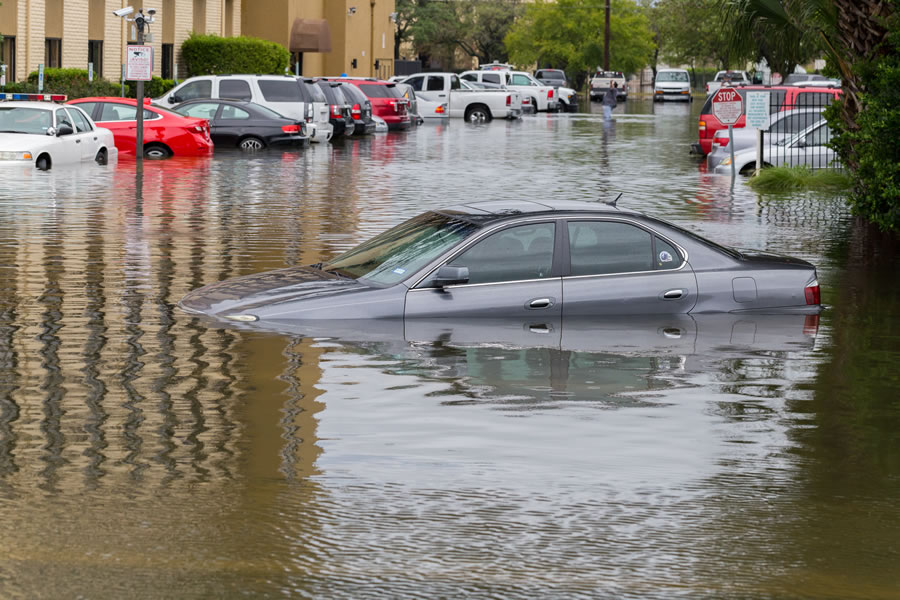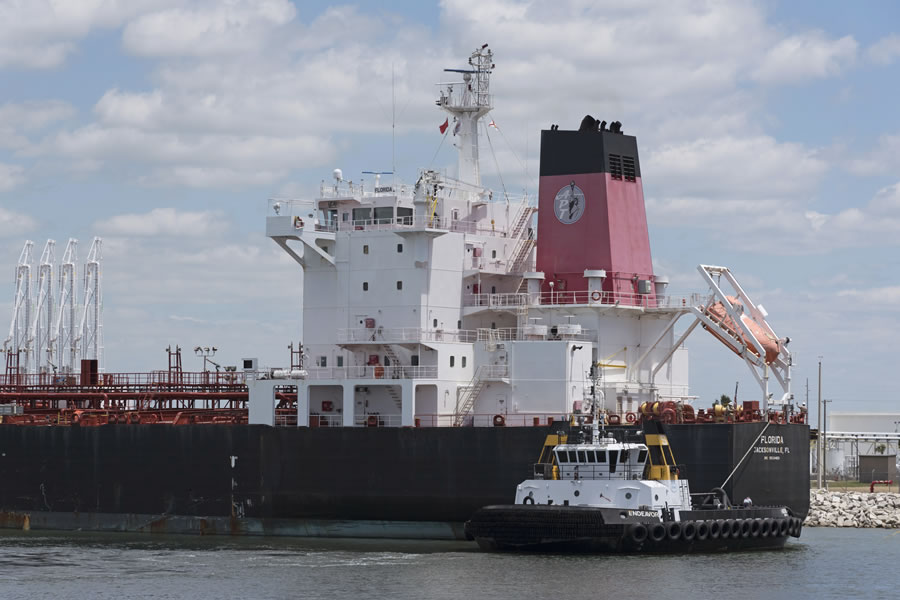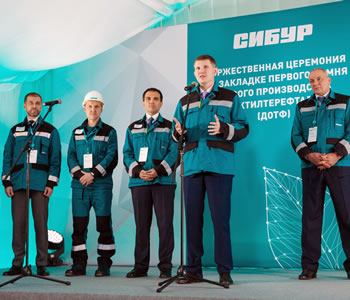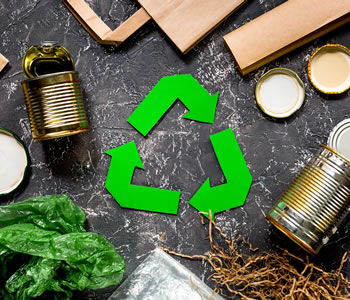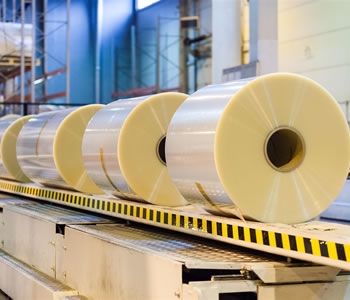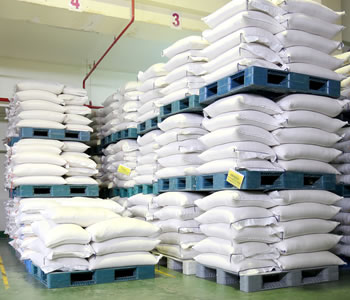The Atlantic Ocean's season of tropical storms runs from June to December each year. At a wind speed of over 33 m/s, a storm is classified as a hurricane. 2017 has been a record year with a total of ten Atlantic hurricanes formed in a row, including two of the highest category of scale, for the first time over a century of observations.
The first of them – Hurricane Harvey – hit the Gulf of Mexico and Texas, home to major U.S. oil and gas production, refining and chemical facilities, at peak intensity. Harvey has become a real disaster due to a combination of several factors, including its direction, intensity and duration. It brought some 57 trillion litres of precipitation (about the same amount as the Niagara Falls would dump in 15 days). Hurricane Harvey and subsequent hurricanes affected operations of transport infrastructure and hundreds of industrial facilities that were disrupted after the end of August.
Consequences of Hurricane Harvey in Houston, Texas.
2017 has been a record year with a total of ten Atlantic hurricanes formed in a row, including two of the highest category of scale, for the first time over a century of observations.
Oil companies operating in the Gulf of Mexico were the first to raise the alarm. They idled production ahead of the hurricane’s arrival in the hope of a quick recovery. Offshore platforms had previously been hit by hurricanes, so their crews knew what to do. However, this time the Eagle Ford shale basin – one of the heartlands of the shale revolution – lied in the path of the storm. As a result, up to 20% of U.S. oil production was taken offline, and the Department of Energy had to tap the nation’s strategic petroleum reserves.
At the same time, many coastal ports closed, leading to a logjam of oil tankers from Latin America, Africa and the Middle East drifting off the U.S. Gulf Coast in the beginning of September. In the face of the hurricane threat and disruptions in feedstock supply, oil refineries and petrochemical plants began announcing production layoffs. Overall, at least one third of the U.S. oil production went offline, including operations of ExxonMobil, DuPont, LyondellBasell, Formosa, Chevron Phillips Chemical, OxyVinyls and other companies.
Oil tankers from Latin America, Africa and the Middle East drifting off the U.S. Gulf Coast in the beginning of September.
This time the Eagle Ford shale basin – one of the heartlands of the shale revolution – lied in the path of the storm. As a result, up to 20% of U.S. oil production was taken offline, and the Department of Energy had to tap the nation’s strategic petroleum reserves.
The ethylene segment was hit particularly hard, as hurricanes deprived the United States of more than 60% of this valuable petrochemical feedstock. This has sent shockwaves across the U.S. market and the global petrochemical industry alike. According to the Alembic Global Advisors analyst Hassan Ahmed, ethylene and its derivatives account for about 40% of the global trade in chemical products. The U.S. share in this market historically stands at about 20%. Before Harvey’s landfall in the country, ethylene plants around the world had already been running at high utilisation rates, so the potential for ramping up production in other regions was severely limited.
As a result, ethylene prices soared. Although the ethylene market stabilised by the end of autumn, it is still under pressure due to delays in the launch of new production capacities in the U.S. also caused by natural disasters. Other product segments (propylene and polypropylene, caustic soda and polyvinyl chloride (PVC), monoethylene glycol and paraxylene, benzene, styrene and polystyrene, etc.) have been affected in a similar manner, with the hurricanes’ after effects still in place. Among those feeling the change was one of the world’s largest producers of polyolefins NOVA Chemicals that announced an increase in prices for some grades of expandable polystyrene supplied to the North and South Americas. The increase came at the end of November, shortly after NOVA’s previous price adjustment made in October.
The change has affected not only prices, but also the geography of supplies. Thus, the U.S. has seen a dramatic increase in its post-hurricane demand for PVC, which is used to manufacture various types of construction products such as pipes, insulation, exterior and interior finishes, etc. As a result, local producers began to focus more on the needs of the domestic market, which threw exports into question. Yet, as an example, the Middle East countries are used to having more than half of the required PVC supply come from the U.S.
The Middle East countries are used to having more than half of the required PVC supply come from the U.S.
The change has affected not only prices, but also the geography of supplies. Thus, the U.S. has seen a dramatic increase in its post-hurricane demand for PVC, which is used to manufacture various types of construction.
ICIS experts believe that the prevailing market environment is similar to that caused by Hurricane Rita in 2005. Back then, the ICIS Global Petrochemical Index (IPEX) for the USA, which represents a capacity-weighted basket of 12 primary petrochemical products, grew significantly relative to the standardised Brent Index, although it usually tends to follow oil price fluctuations. It took many months to restore their typical correlation.
It is likely that 2017 will be one of the hottest years ever marked by extreme weather records, according to the Statement on the State of the Global Climate released by the World Meteorological Organisation (WMO) in early November on the opening day of the United Nations climate change conference. The document directly names the extraordinary number of natural disasters, including the Atlantic hurricanes, among the visible effects of the global climate change. And as long as the problem persists, the risks only become greater.
The return of this year’s scenario is not ruled out going forward as the nature’s devastating attacks are hard to predict and prevent. Experts estimate that in the long run the impact of the Atlantic hurricanes on the global petrochemical market will be growing larger in scale. In the next ten years, the U.S. is expected to launch substantial production capacities that will double exports of local producers as compared to 2005. “This will tie the global markets even closer to the developments in the Gulf Coast,” according to IHS Markit.
Download PDF

